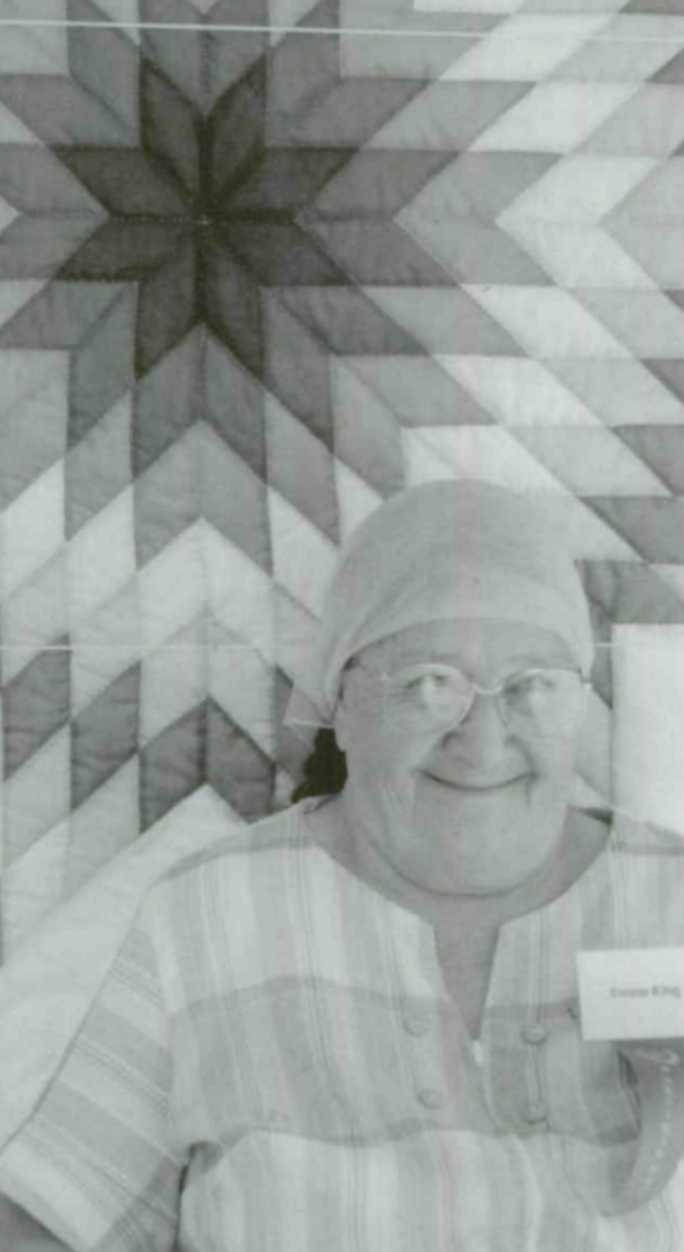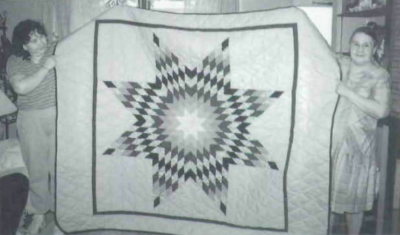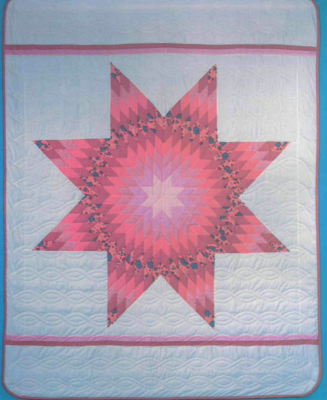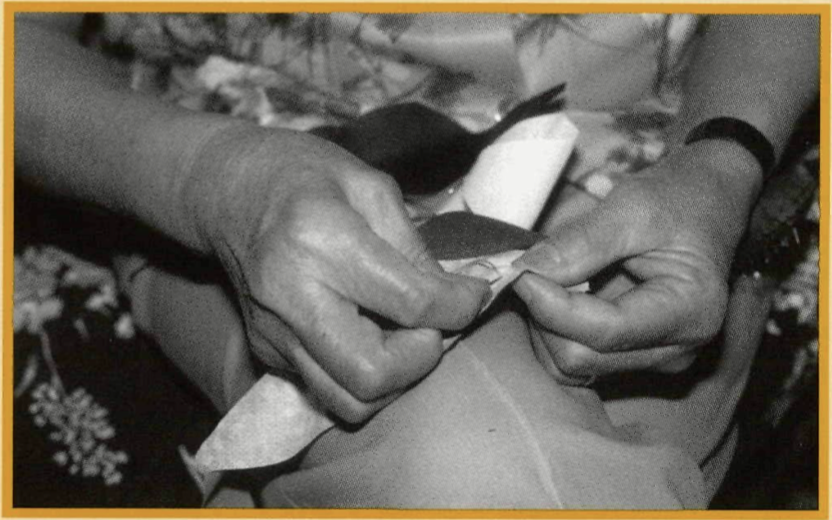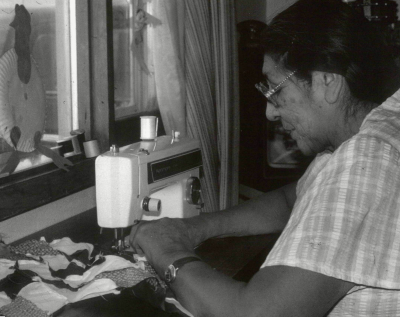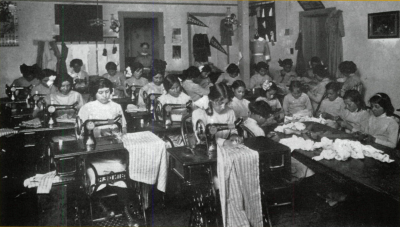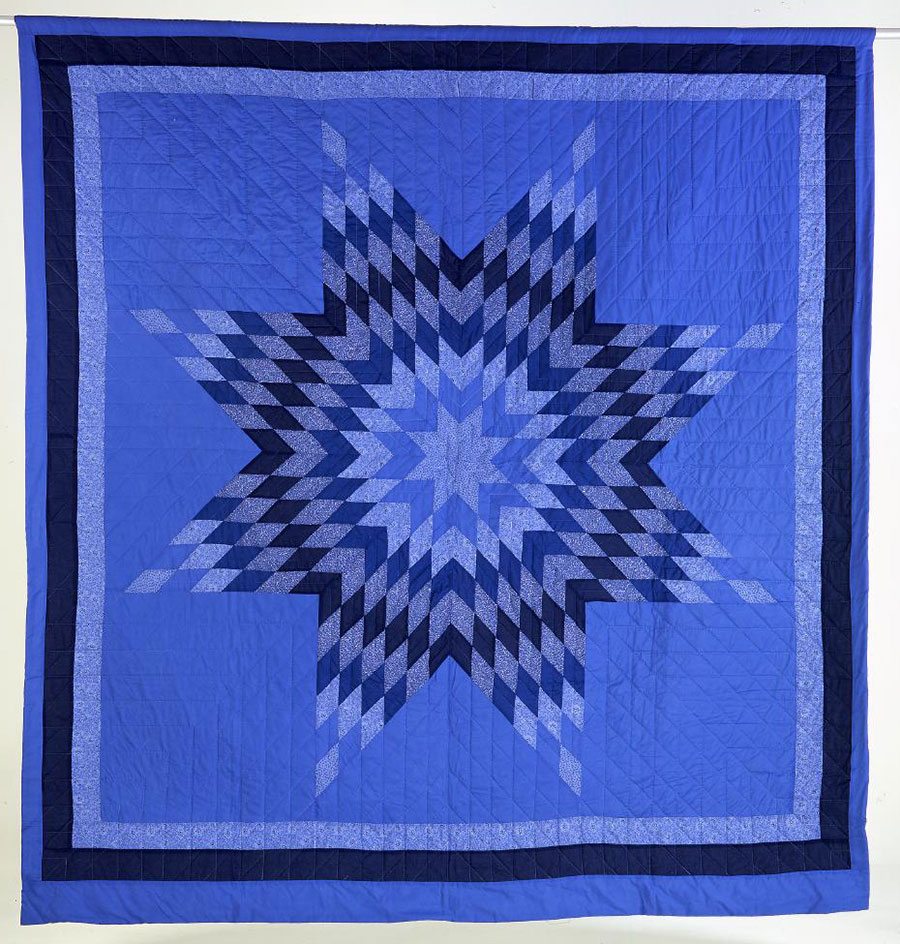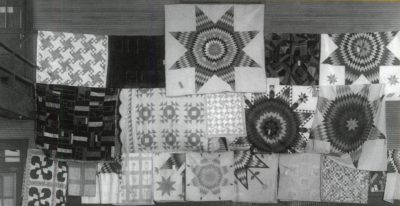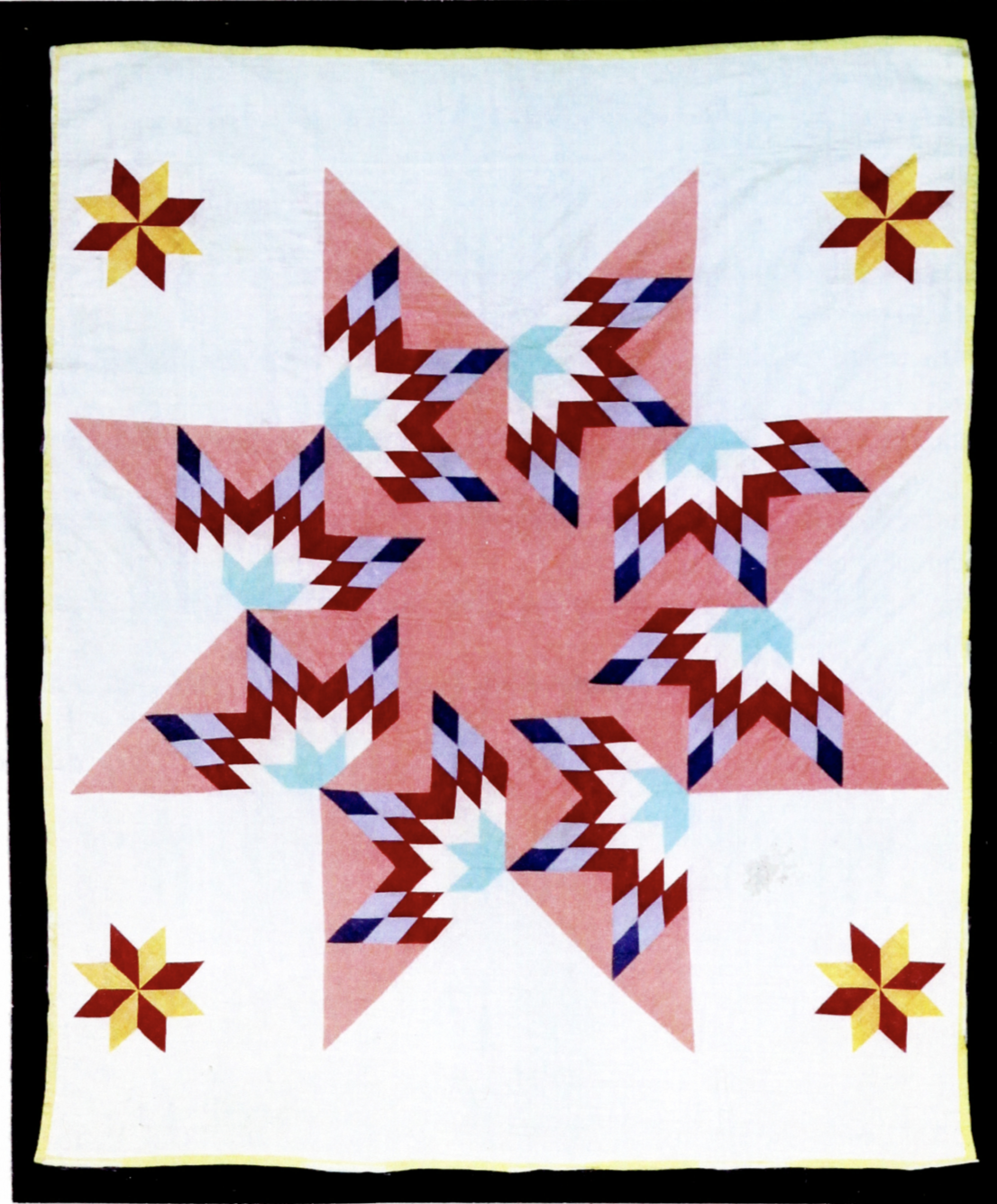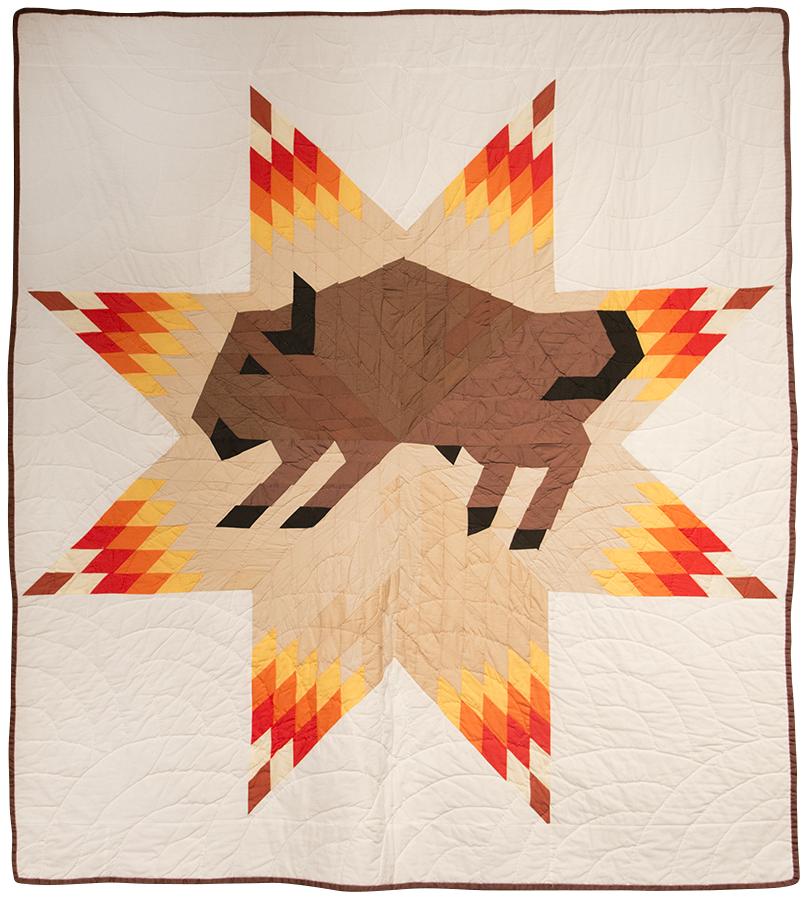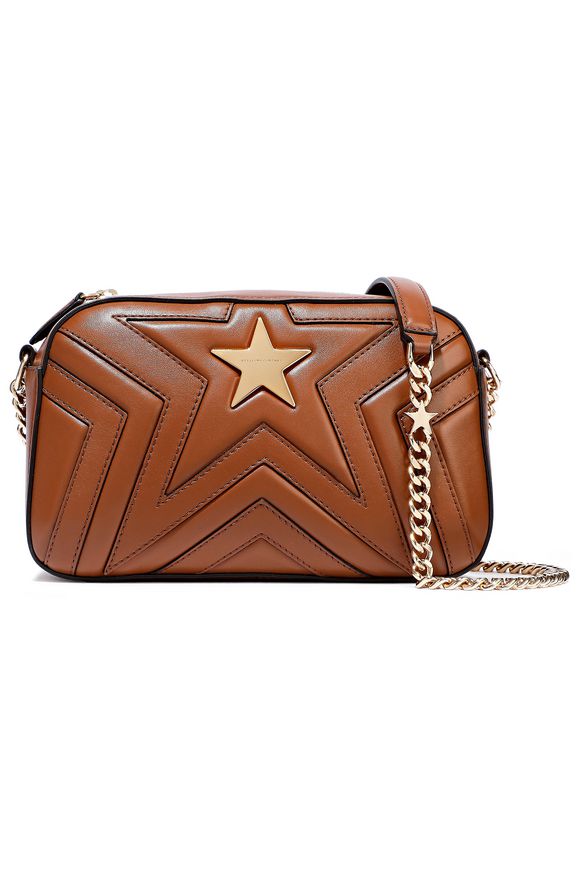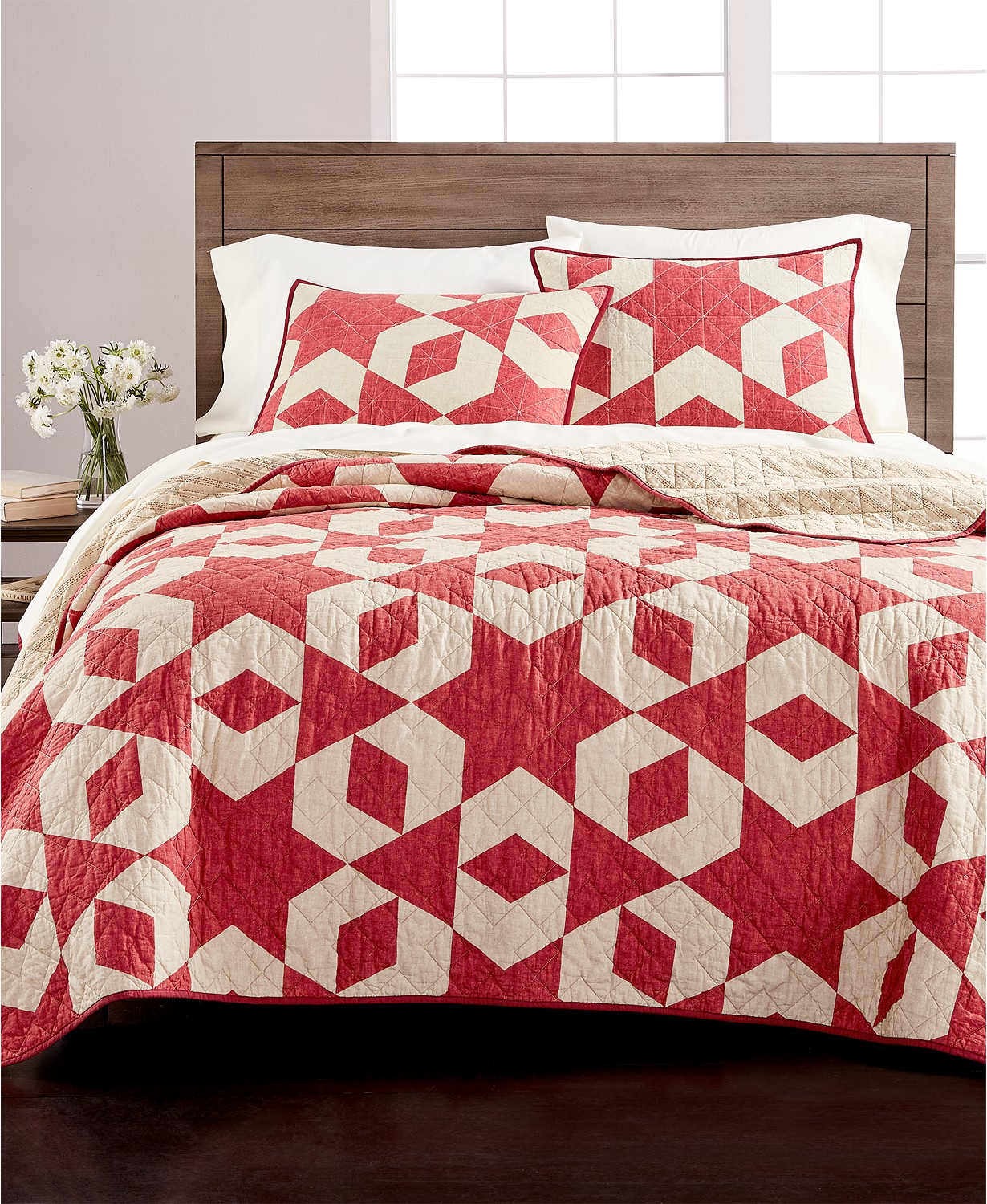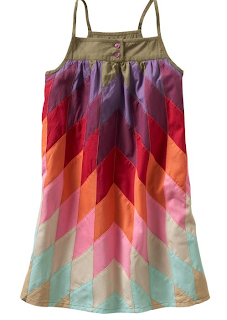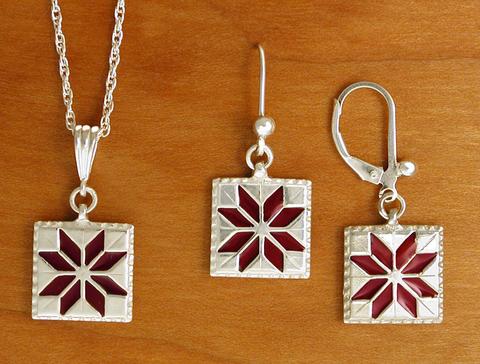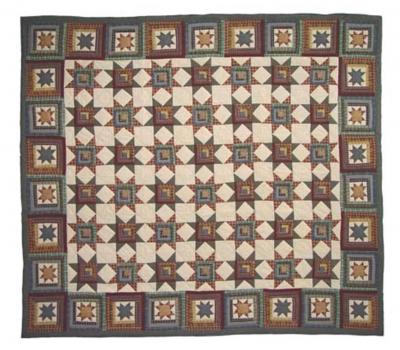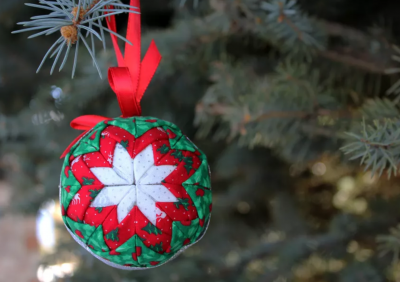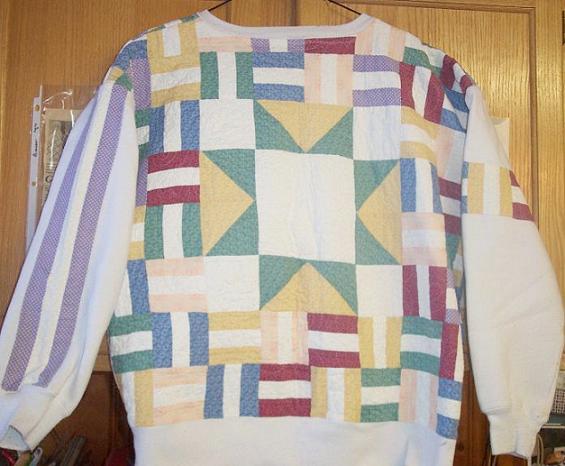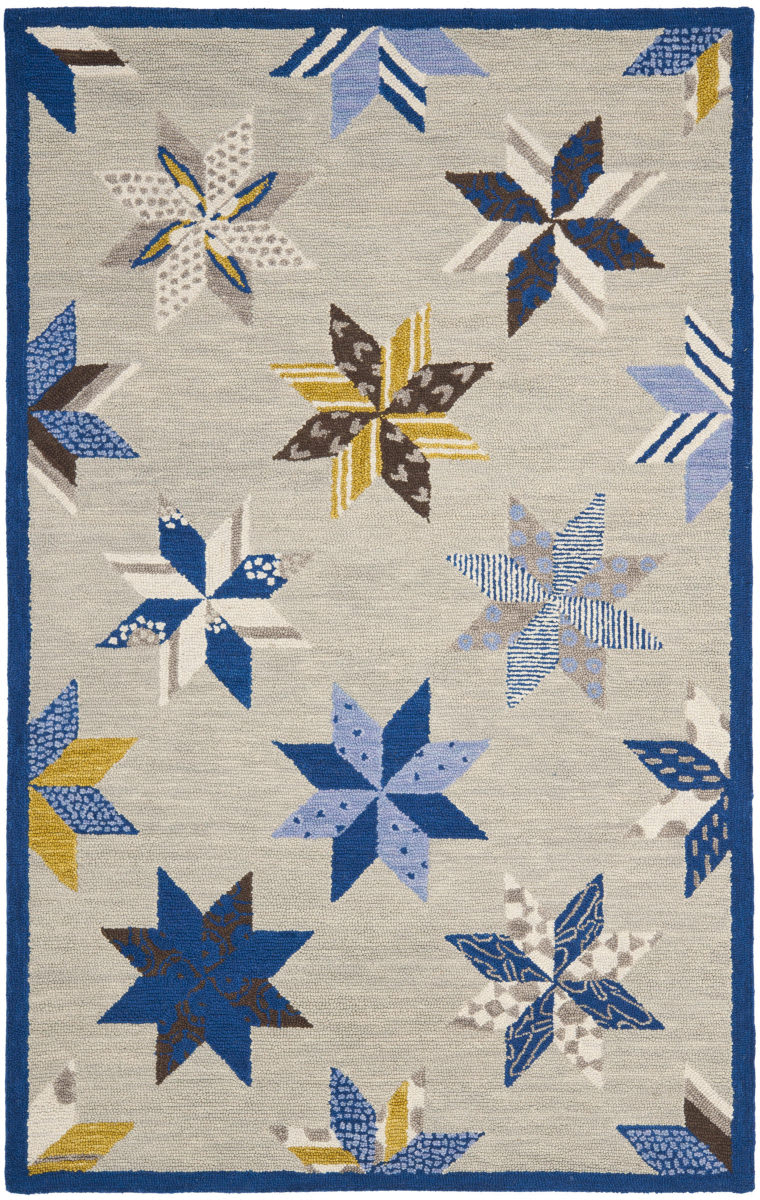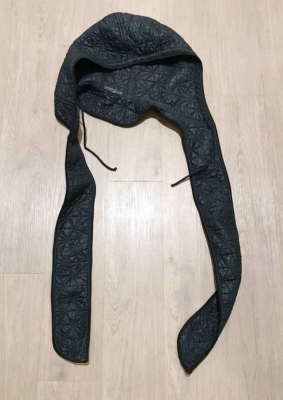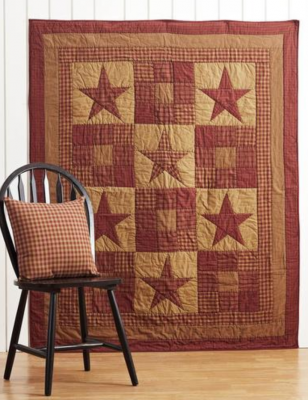The Technique
What process was/is used to make the design in general?
The star quilting process begins by cutting out pieces of fabric that are diamond shaped. Then, five or six diamond pieces are sewn together in strips. These strips fit neatly together and are sewn to create large diamonds. The large diamonds are sewn together to create the big star. The pieced together star is sewn onto a background, and another large piece of fabric is sewn behind for backing with filling in between the two (Martin, 1989). The only step remaining is the actual quilting. For this process, “. . . a semicircular pattern and small, even stitches” are used (Martin, 1989, p. 27). Originally, every part of the quilt was hand-sewn and often still is. Some parts may be machine-sewn for a more precise look (Shriver, 2016). The skill of the quilter is evident through the stitches (Hans, 2010). The final step is binding. This is done by cutting long strips of fabric to sew over the raw edges of the quilt (Hans, 2010). This step encases all three layers to prevent separation. These main steps are used in the most complex and basic star quilts.
The star quilt pattern is one of the most difficult to achieve. Quilters must spend long hours sewing carefully and accurately. When a star quilt is laid flat without the center or edges sticking up, the quilt is sewn perfectly (Breneman, 2002). Even one stitch could possibly throw off the alignment of the quilt.
Is it surface, structural, or a combination?
Star quilting is considered a structural design. The eight-pointed star design is created as the quilt is sewn together (Hans, 2010). The sewing and tacking of the fabric is integral to the design because the way the pieces are sewn together gives the quilt its unique look.
What materials were/are used for the design?
Each quilt consists of layered fabrics, thread to sew the fabric together, and some sort of filling. Materials used to make star quilts come from many places. They were originally traded with other groups but are now bought from people outside of the tribe (Shriver, 2016). Early quilts were made from recycled fabric pieces, such as “. . . old clothing, muslin, flour and salt sacks, and filled with coarse burlap feed and potato sacks” (Shriver 2016). In quilting, the filling is referred to as ‘batting.’ The early quilts were stuffed with torn up cotton or wool (Hans, 2010). Most modern quilts are made from modern fabric blends or cotton that are bought. A popular choice for the stuffing, or batting, in modern quilts is polyester and cotton (Martin, 1989). Another choice for filling is layering. A a top star layer is pieced together and sewn on top of a quilt a person already owns. This created a thicker quilt and uses the old quilts as batting (Shriver, 2016). Star quilt materials vary by design and maker, but that is what makes each one unique.
Who did the work?
The quilting is mainly done by the Native American women of all social classes. Quilting emerged in Native American society on reservations. As you can see in the image The girls sewing class at the FortTotten Indian School in 1913, the girls were required to practice and learn to sew in their schooling. They were taught homemaker skills (Hans, 2010). The quilting job, specifically star quilts, was very important in the Lakota tribe because of the great significance of the quilts. Not every woman was a quilt maker, though, because of the difficulty and precision of sewing. This is how the job remained significant and an important skill to have if you had the talent (Hans, 2010). Many girls also learn quilting skills from the elder women in their family (Shriver, 2016). It is a tradition that has been passed on for several generations, now. Lakota women who make star quilts often times spend the whole year quilting (Shriver, 2016). This is because the quilts are in high demand within the tribes because they are used in a lot of honorary ceremonies.
Today, there is more fluency between the male and female art. Men and women can both make star quilts now (LoneHill, 2003).
What was/is the purpose of the textile with this surface design?
Star quilts have a lot of significance in Native American tribes. They “. . . are one of the definitive cultural symbols of the Lakota people” (Shriver, 2016). Quilts in general have long been significant. The star quilt pattern did not gain public popularity in Native American tribes until the 1950’s because of the American government’s attempt to stop traditional Native American ceremonies (Hans, 2010). Even though it is not documented, they could have been used in ceremonies before then along with other quilt patterns.
Star quilts are very symbolic in Native American tribes. They are considered to have the same significance as the hand-painted buffalo robes from long ago. Star quilts are a symbol of honor and are a part of everyday Lakota life. (Shriver, 2016). Gratitude is shown through the giving of a star quilt. It is one of the greatest honors of the Lakota tribe (Thompson, 2017). Giveaways are traditional Native American ceremonies that “. . . mark an important event in an individual’s life or within a family” (Hans, 2010). Giving of a star quilt is present at these giveaways. The cultural significance and importance of these events has remained constant throughout time, as Native Americans have always had these ceremonies with presentations of buffalo hides and quilts (Hans, 2010). Today, these include “. . . naming and adoption ceremonies, high school and college graduations, military service, weddings, funerals, and memorial ceremonies one year after a person’s passing” (Thiel, 2017). People of the Lakota collect many star quilts over the years as symbols of great honor for their life achievements and milestones.
Is the technique still being carried out today by the culture? Do they still practice the technique, teach it, and produce objects with the technique?
Today, star quilting is continued today in Native American culture. Today, being gifted a star quilt still remains a symbol of great honor (Thiel, 2017). Shriver remarks that the star quilt “. . . has become the singular piece of artwork that is a symbol of being Lakota in the modern world” (2016). The same technique used is still used, today. They use more modern materials, though, and sometimes sew parts of the star quilt using a sewing machine for greater accuracy. Lakota woman, Freda Goodsell, uses a machine to sew parts of her quilts, today (Shriver, 2016). The practice is still taught. Normally, the technique is passed down from generation to generation, usually mother to daughter (Shriver, 2016). The objects produced today are mainly quilts because they still use them in giveaway ceremonies. The eight-point star pattern, though, has been copied to other mediums and even interpreted in different ways.
Popular Culture Today
How is this surface design or structural design or combination produced today?
The structural design of the Lakota star quilts has been evolutionized into a modern design that is used throughout all types of clothing, accessories, house bedding and rugs today. Designers have updated the original design print by applying a more simplistic look to the design itself. In addition, the design has been transformed into pop-culture by expanding from quilts and being applied to more popular items today also.
Has the visual of the surface or structural design been used in material culture production today in popular culture or the fashion world?
The structural design has been used frequently in popular culture along with the fashion world today. For instance- the Stella McCartney purse, the star-quilted sweatshirt, and the quilted Christmas ornament.
Is it copied or used as inspiration?
The Stella McCartney purse is definitely used as inspiration from the star quilt. This purse does not mimic the original quilt design, but has quilted leather material and threading in a star shape. The star-quilted sweatshirt and the ornament both copy the lakota star quilts. Both of these items are quilted with the same materials that the original quilts were made from.
What materials are used in the production?
The Stella McCartney purse was made from faux leather, faux suede, and gold hardware. The quilted sweatshirt was made from cotton fabric. The quilted ornament was made also made from 3 different smaller cotton fabrics, along with ribbon, a styrofoam ball, and dressmaker pins.
Where can it be purchased?
The Stella McCartney purse can be purchased at THEOUTNET, an online website. The sweatshirt can be purchased by a personal artist, Ruth Ann. The Christmas ornament can be purchased on the website, The Spruce Crafts.
Who is producing it?
The producer of the Stella McCartney purse is Stella McCartney, the designer. The producer of the quilted sweatshirt is Ruth Ann, who is also the seller. The producer of the ornament is unknown, but listed under Spruce Crafts.
How much does it cost?
The Stella McCartney costs $1045, the sweatshirt costs $50, and the ornament costs $20.
Legal/Moral Issues
END
Has the culture group who produced the technique you researched given permission for the use of their work with the examples discussed in Part II?
Since the Lakota quilts were only used as a source of inspiration, they did not give permission for Stella McCartney to use their designs on her product. However, since you can only patent a specific design, pattern, or logo, the star alone would not have been protected under U.S. law. Though the star-quilted sweatshirt and the ornament both can be viewed as copies very similar to the original Lakota quilts, they are merely a reflection of the Lakota culture and there is not a specific trademark protecting these designs from the tribe themselves. Also, because the technique used by the tribe in their quilts is so specific and traditional, authentic Lakota quilts can only be created by members of the tribes themselves.
Discuss the laws that govern cultural intellectual property in the country where the culture resides.
Because the Lakota tribe is a Native American tribe that resides within the United States, the laws remain the same for the tribe as they do for the rest of the country in regards to cultural intellectual property. Though when the tribe first came about, these laws were not yet in place. The first U.S. patent law was drafted into the Constitution by Washington on July 31, 1790 well after the tribe’s existence.
What laws in the US govern cultural intellectual property?
Intellectual property laws within the United States are strictly enforced in order to protect various art, inventions, and designs. This is to ensure that artists can work freely without fear of someone coming along and copying their work. After laws such as these are passed by Congress, there are two specific agencies that oversee and enforce laws pertaining to intellectual property; the U.S. Patent and Trademark office, and the U.S. Copyright office. In the fashion industry, trademarks are most commonly used in order to distinguish brands from one another and protect specific symbols and designs.
Is the design considered sacred and should not be reproduced because of its sacred nature?
While these designs are considered very sacred within the tribes and are used ceremonially in instances such as weddings and funerals, it is not seen as immoral to produce the star quilts themselves. However, certain motifs present on many of the traditional quilts should not be reproduced such as the morning star which symbolizes the connection between the living and the dead. Taking these designs as merely inspiration though is for the most part viewed as harmless.
Is the technique/visual representation of the culture’s work considered public domain?
As there are many videos online explaining step by step how to construct a Lakota star quilt from Lakota tribespeople themselves, I would say that their work can be considered public domain. This is with the exception though that the sacred ceremonies that come with these quilts should not be taken lightly and should be taken into consideration when purchasing one of these works of art. However, no one can create the quilts as authentically as the tribe and the other products are imitations.
